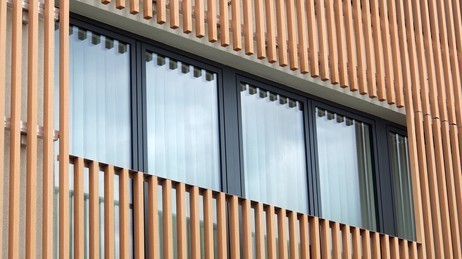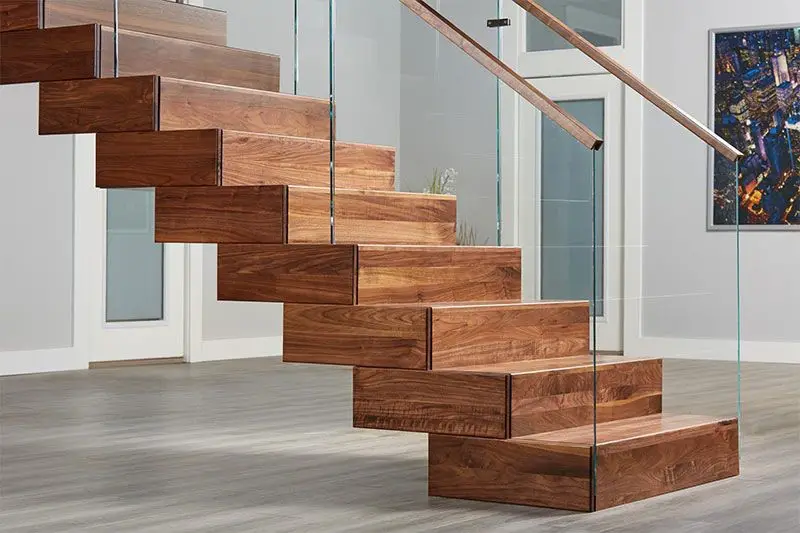The industrial sector of the world is continuously expanding in terms of advancement, safety, cost and ease of access. Especially the architecture and construction domain of the industry has set a remarkable change. In order to meet the requirements of modern construction industry, CNC technology plays a central role.
Computer numerical control (CNC) machining is a technology that allows automated precise operations, higher production rate, safety and creation of complex geometries for interior designs. Another advantage of using CNC is that it can handle many materials like stainless steel, aluminium and polymers too.
With the industrial revolution in the world, the image of architecture has changed dramatically. The main difference between the two is design methods and aesthetics theories. The classical architecture was very limited to the design ideas because of the absence of the technologies and methods that could construct the idea into the physical existence. Only temples and royal palaces enjoyed the art of classic architecture. All the architectural work done on these domains reflects the ideas of a person and the practical skills of an individual, lacking the uniformity in the design.
Modern architecture has proposed the new design ideas and aesthetic theories that with the help of the technology including the CNC are making the different structures, complex geometries, facade and interiors. Not only the goal of producing the precise geometry is achieved using CNC in modern era but also providing the better finishes, a variety of aesthetic materials and uniformity in design that is the very fundamental point for the recognition and nomenclature of the design. For example, the engraving the patterns on wood using CNC is achieved using a code (G code). All the time this code is used the same patterns will be created without any minor difference. The products will be uniform with better surface finishes and safer to use.
The construction industry is the mother of many other industries. Thus advancement in these industries, demands the modern technologies to be used in construction industry too. This industry is directly linked with marketing, enterprises and property dealings. Audience of this industry are the general public, businessman and other laymen people who has no knowledge of construction, architecture, design, aesthetics, materials, façade, floor plans and other terms. So it is desired to produce the prototype or scaled model of the buildings or structures to present to the clients, investors and showcase. Use of CNC in construction industry creates very small details of models and different unique ideas. Architects and designers create the CAD model and then import the code to the CNC that then generates prototype in exactly the same manner as designed in CAD.
Woodworks and engraving is another domain of the construction industry. CNC is used to create the patterns on wood, wooden products like stairs, panels, railing, fences and beams etc. CNC engraving is mostly used for decoration industry in the domain to create window frames, wooden floors, cabinets and panels. Special designs are made using CNC for fitting in structures like warehouses and barns.
Role of CNC in architecture is more important than in construction industry. Creation of modern design ideas and aesthetics using the metals and other materials is only possible with CNC. Making of wooden facades and residential house fronts are main applications of CNC in architecture. Windows and door panels are now created on CNC to give the better finishes and engraving of the organic patterns etc. Another advantage of using this technology in Architecture is the designing of better surface finishing parts of metals. Like stainless steel is processed in CNC to make the grilling used in stairs or front covers in terrace. This metal has very low machinability and is very hard to cut. At the same time, this metal has the best aesthetic look and design requirements. The figure below shows the wooden façade of a building made using CNC. The size and the surface finishing is constant throughout for each of the façade element.

For any building from residential to commercial, the decision making point is its interior design. The marketing and rental industry has invested in this field more than any other in order to make it more attractive and dreamy. From bedroom design to kitchen designs, wooden floors to roof designs, everywhere the creation of organic geometries and shapes is achieved by CNC technology whether the material is wood or metallic or any other. Another important feature that categorizes the interiors as good or bad is calligraphy work on walls, usually wooden calligraphy. This calligraphy can only be achieved using CNC technology by engraving the wood panels into the desired patterns. This domain includes the design of beds and other furniture, kitchen cabins and other decorative ornaments like lamps, bookshelves etc.

In the figure above, all the wooden products like bed, tables, lamps and patterns on wall are all created using CNC technology, without which it was nearly impossible to make such an aesthetic interior. CNC has made it easier with more flexibility.
Architects in New Zealand are utilizing the CNC technology to build the complex structures. ‘Click-raft’ a structure in Wellington, made of plywood lattice, straight click beams and curved panels. All this is made using CNC technology.
Another living example is “Museum of the future” situated in Dubai. It is a complex steel diagrid and composite façade being made using CNC technology.
Conclusion
Modern architecture has changed dramatically in terms of design concepts, aesthetic theories and practical implementation. It demands an accurate solution that took less time and produces more uniform structures. CNC is the solution to all these problems. It is used to create the scaled building models, façade, window panels, wooden floors etc. The use of CNC in construction and architecture has resulted in organic structures, better surface finishes and more aesthetic interior design. CNC technology is opening new direction for architects to produce structures in very less time with best aesthetics and unique ideas.
